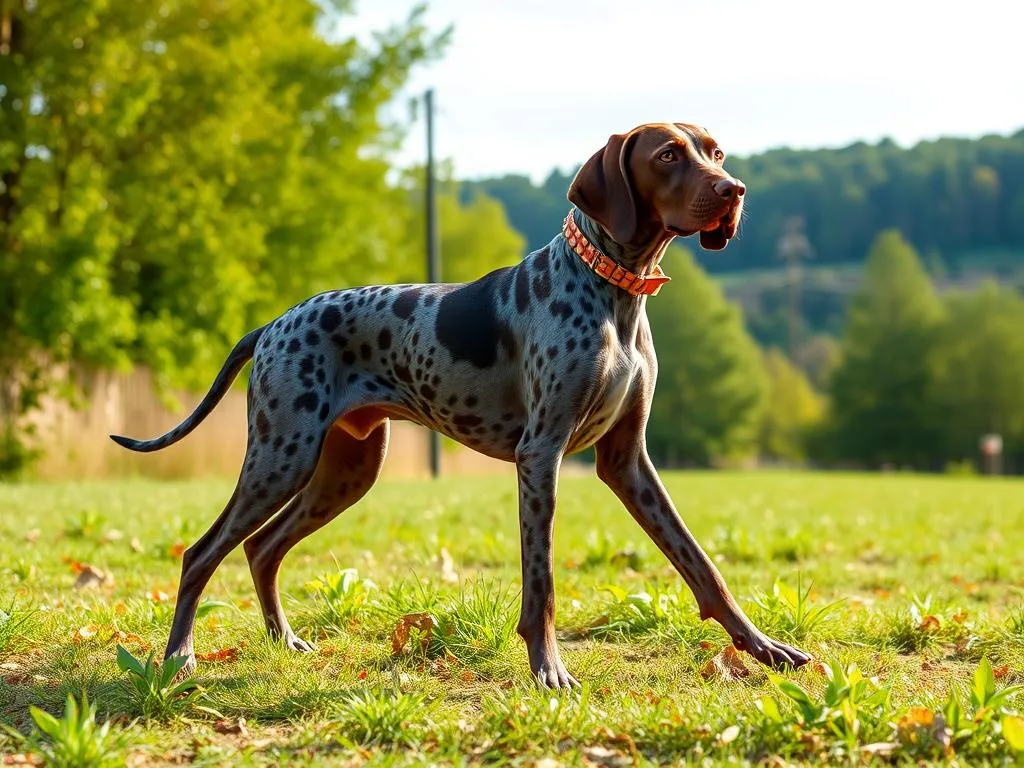
Introduction
Understanding different dog breeds is essential for potential pet owners and dog enthusiasts. Each breed comes with its unique traits, history, and needs. The German Shorthaired Pointer (GSP) is particularly notable for its versatility, making it a popular choice among both hunters and families. This article delves deep into the fascinating facts about GSPs, providing a thorough overview for those considering adding this breed to their home.
History of the German Shorthaired Pointer
Origin of the Breed
The German Shorthaired Pointer has a rich history rooted in Germany, where it was developed in the 19th century for hunting purposes. The goal was to create a dog that could work both on land and in water, capable of tracking, pointing, and retrieving game. As such, the GSP was bred from a combination of various breeds, including the Spanish Pointer, English Pointer, and German breeds like the Weimaraner and the German Bird Dog.
In addition to its hunting prowess, the GSP quickly proved to be an excellent family companion due to its friendly demeanor and loyalty. The breed’s ability to adapt to various environments made it a favorite among hunting families who sought both a working dog and a family pet.
Recognition and Standards
The German Shorthaired Pointer gained recognition from various kennel clubs over the years. The American Kennel Club (AKC) officially recognized the breed in 1930. The breed standards set by organizations such as the AKC emphasize the GSP’s physical and behavioral traits, ensuring that they remain true to their original purpose while adapting to family life.
Physical Characteristics
Size and Weight
The GSP is a medium to large breed, typically standing between 21 to 25 inches tall at the shoulder. Males generally weigh between 55 to 70 pounds, while females range from 45 to 60 pounds. Their athletic build and strong structure make them agile and capable of enduring rigorous exercise.
Coat and Color Patterns
One of the distinctive features of the German Shorthaired Pointer is its short, dense coat that provides protection against harsh weather conditions. The coat is easy to maintain and requires minimal grooming. Common color patterns include liver and white, black and white, or solid liver or black. The unique ticking or spotting often seen on their coat further enhances their visual appeal.
Distinctive Features
GSPs are characterized by their long, floppy ears and expressive eyes, which contribute to their keen hunting abilities. Their tails are typically docked in some countries, but in others, they are left long. Overall, their athletic physique and striking appearance make them easily recognizable.
Temperament and Behavior
General Behavior Traits
The German Shorthaired Pointer is known for its intelligent and energetic nature. They are highly trainable and thrive on mental and physical stimulation. GSPs are affectionate and loyal, often forming strong bonds with their families. However, their high energy levels mean they require regular exercise and engagement to prevent boredom and destructive behavior.
Socialization Needs
Socialization is paramount for GSPs, as they are naturally friendly and enjoy the company of people and other pets. Early exposure to various environments, sounds, and animals will help them develop into well-adjusted adults. Regular interaction with different people and pets can also help mitigate any potential behavioral issues.
Training Characteristics
Training a German Shorthaired Pointer can be rewarding, but it requires consistency and patience. These dogs respond well to positive reinforcement techniques, such as praise, treats, and play. They are eager to please, making them quick learners. However, their independent nature may present challenges, so it’s essential to establish firm, consistent leadership during training.
Health and Lifespan
Common Health Issues
Like all breeds, GSPs are prone to certain health conditions. Some common genetic predispositions include hip and elbow dysplasia, progressive retinal atrophy, and skin allergies. Regular veterinary check-ups can help catch these issues early and maintain overall health.
Lifespan Expectations
The average lifespan of a German Shorthaired Pointer ranges from 12 to 14 years. Factors such as genetics, diet, exercise, and overall care can significantly influence longevity. Providing a balanced diet, regular exercise, and routine veterinary care can enhance a GSP’s quality of life and lifespan.
Preventative Care
Preventative care is crucial for maintaining the health of a GSP. Regular veterinary visits for vaccinations, dental care, and health screenings should be part of a responsible ownership routine. Keeping an eye on potential health issues, such as changes in behavior or physical condition, will also help in addressing problems promptly.
Exercise and Activity Needs
Daily Exercise Requirements
A German Shorthaired Pointer is an active breed that requires considerable exercise daily. Ideally, they should have at least 1 to 2 hours of vigorous activity, such as running, hiking, or fetching. Their strong prey drive means they excel in activities that allow them to use their natural instincts, like agility courses or hunting trials.
Mental Stimulation
In addition to physical exercise, mental stimulation is essential for GSPs. Engaging them in activities like obedience training, scent work, or puzzle toys can keep their minds sharp and prevent boredom. Interactive games and training sessions not only provide mental enrichment but also strengthen the bond between the dog and its owner.
Ideal Living Environments
While GSPs can adapt to various living situations, they thrive in homes with ample space for exercise. A house with a securely fenced yard is ideal, as it allows them to explore and play safely. However, if living in an apartment, owners must commit to providing regular outdoor exercise and mental stimulation to keep their GSP happy and healthy.
Grooming and Maintenance
Grooming Needs
Grooming a German Shorthaired Pointer is relatively straightforward due to their short coat. Regular brushing, ideally once a week, helps to remove loose hair and dirt. Bathing should be done as needed, typically every few months or when they become particularly dirty. Routine ear cleaning and nail trimming are also important aspects of grooming.
Diet and Nutrition
Proper nutrition is vital for maintaining a GSP’s health and energy levels. A high-quality dog food formulated for active breeds is recommended. Owners should consult with their veterinarian to determine the best diet based on age, weight, and activity level. It’s essential to monitor their weight, as GSPs can be prone to obesity if overfed.
Health Monitoring
Regular health monitoring is critical for identifying any potential issues early on. Owners should be aware of signs such as changes in appetite, energy levels, or behavior. Routine veterinary check-ups and vaccinations will help ensure a long and healthy life for your GSP.
The GSP as a Family Pet
Compatibility with Children and Other Pets
The German Shorthaired Pointer is known for being gentle and affectionate, making them an excellent choice for families with children. They are generally good with other pets, especially if socialized from a young age. However, their high energy may be overwhelming for very young children, so supervision is essential during playtime.
Responsibilities of Ownership
Owning a GSP comes with significant responsibilities. Prospective owners must be prepared for daily exercise, training, and socialization. Regular grooming and health monitoring are also part of responsible pet ownership. Those who can commit to these needs will find that GSPs are loving, loyal companions.
Benefits of Owning a GSP
The emotional and physical benefits of owning a German Shorthaired Pointer are numerous. Their energetic nature encourages an active lifestyle, which can lead to improved physical health for the owner as well. Moreover, GSPs are known for their loyalty and affection, providing companionship and joy to their families.
Conclusion
In summary, the German Shorthaired Pointer is a remarkable breed with a rich history and a vibrant personality. Their intelligence, energy, and adaptability make them suitable for various lifestyles, provided that owners can meet their exercise and socialization needs. If you’re considering adding a GSP to your family, be prepared for a loving and active companion who will enrich your life in countless ways. Understanding the unique characteristics and needs of this breed will pave the way for a rewarding and fulfilling relationship.
As with any pet, responsible ownership and commitment to care are essential in ensuring a happy and healthy life for your German Shorthaired Pointer.









